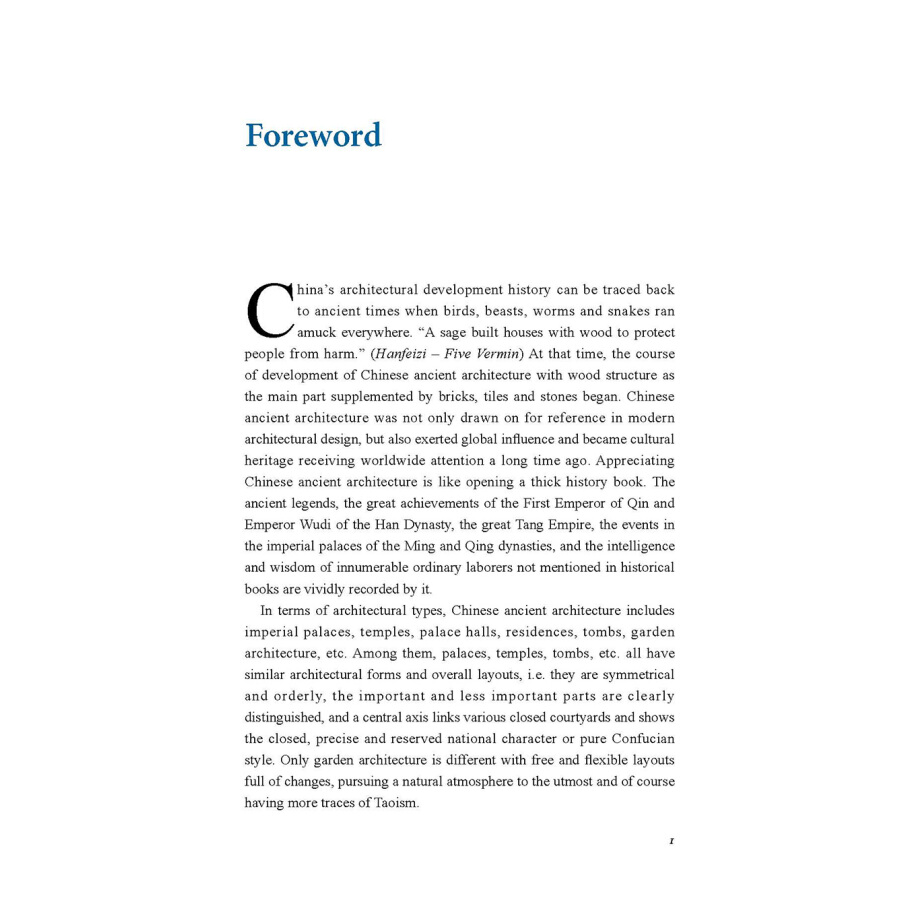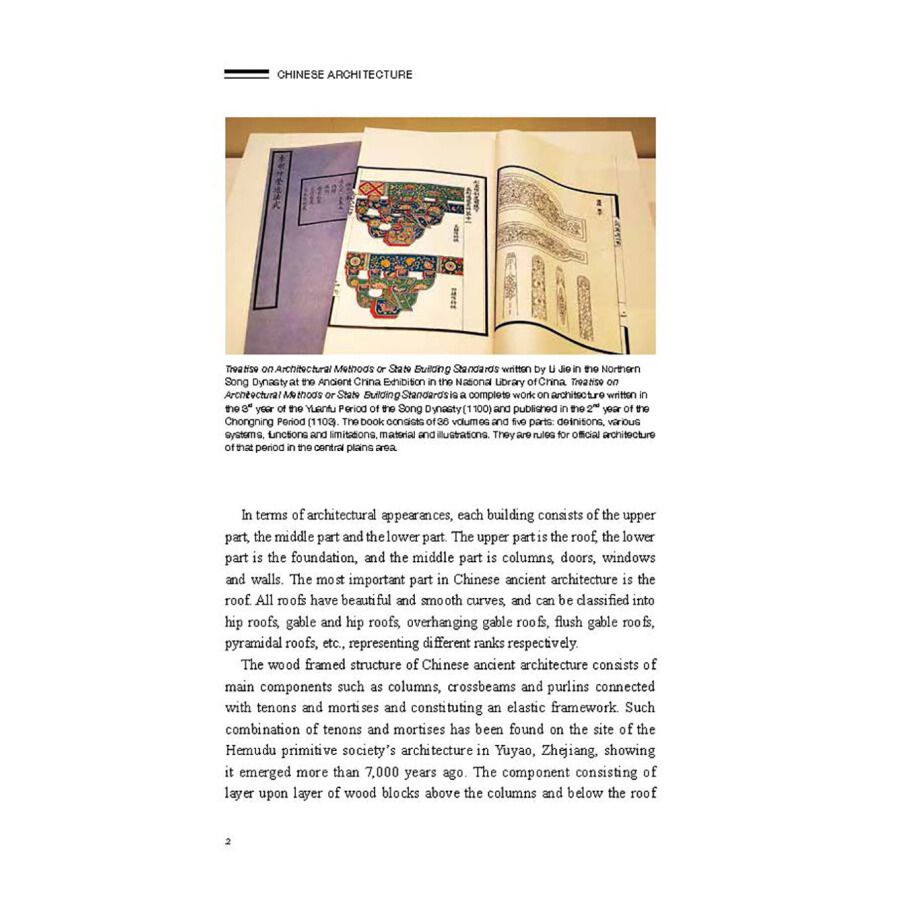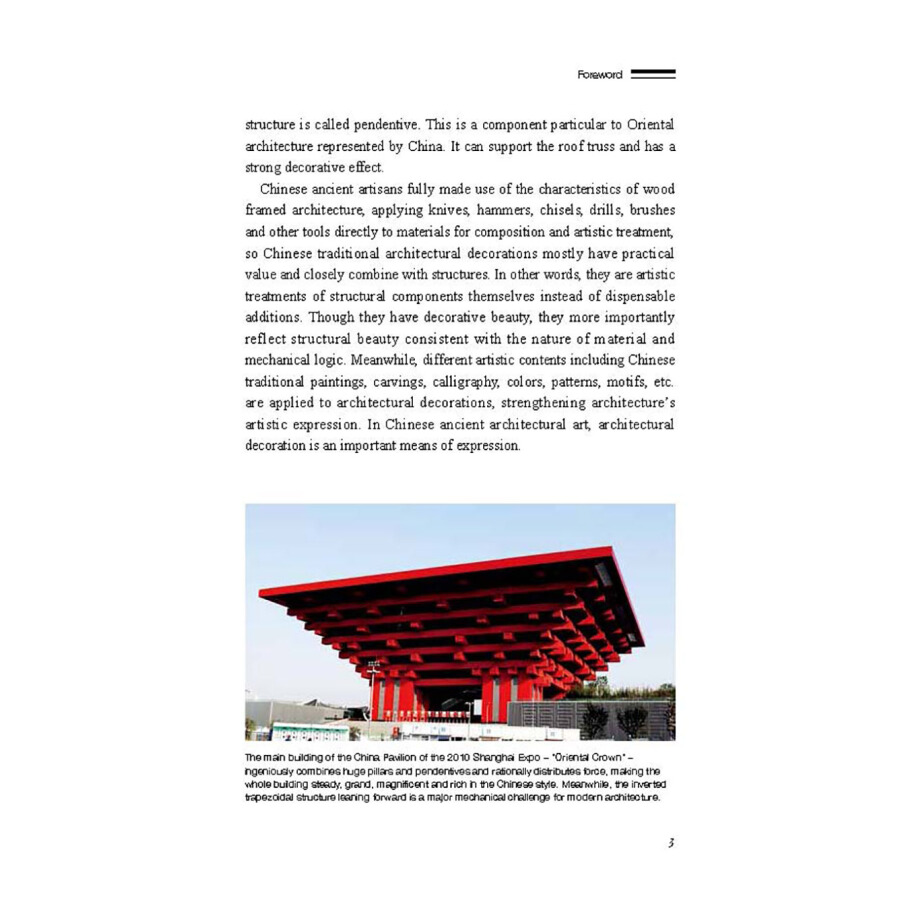Details
What was Chang’an City like in the Tang Dynasty? What is the meaning of “temple”? What are the differences between an imperial garden and a private garden? What changes did Chinese modern and contemporary architecture go through? What characteristics does Chinese architecture show in the new century? This book containing a lot of exquisite pictures is intended to guide readers through China’s long architectural history of thousands of years from the glorious achievements in ancient traditional architecture and the complicated course of development in the modern and contemporary era to today’s magnificent modern cityscapes and show a relatively complete picture of Chinese architecture to interested people.
About Author
Cai Yanxin, female, born in 1980, is a native of Jiaxing, Zhejiang. She graduated from the College of Architecture and Urban Planning, Tongji University in Shanghai with a doctoral degree in 2009. Now she is an associate professor at the School of Architecture, Southwest Jiaotong University, mainly studying traditional architectural culture, historical and cultural towns, and protection and utilization of traditional architecture.
Sample Pages Preview



China’s architectural development history can be traced back to ancient times when birds, beasts, worms and snakes ran amuck everywhere. “A sage built houses with wood to protect people from harm.” (Hanfeizi – Five Vermin) At that time, the course of development of Chinese ancient architecture with wood structure as the main part supplemented by bricks, tiles and stones began. Chinese ancient architecture was not only drawn on for reference in modern architectural design, but also exerted global influence and became cultural heritage receiving worldwide attention a long time ago. Appreciating Chinese ancient architecture is like opening a thick history book. The ancient legends, the great achievements of the First Emperor of Qin and Emperor Wudi of the Han Dynasty, the great Tang Empire, the events in the imperial palaces of the Ming and Qing dynasties, and the intelligence and wisdom of innumerable ordinary laborers not mentioned in historical books are vividly recorded by it.
In terms of architectural types, Chinese ancient architecture includes imperial palaces, temples, palace halls, residences, tombs, garden architecture, etc. Among them, palaces, temples, tombs, etc. all have similar architectural forms and overall layouts, i.e. they are symmetrical and orderly, the important and less important parts are clearly distinguished, and a central axis links various closed courtyards and shows the closed, precise and reserved national character or pure Confucian style. Only garden architecture is different with free and flexible layouts full of changes, pursuing a natural atmosphere to the utmost and of course having more traces of Taoism.


